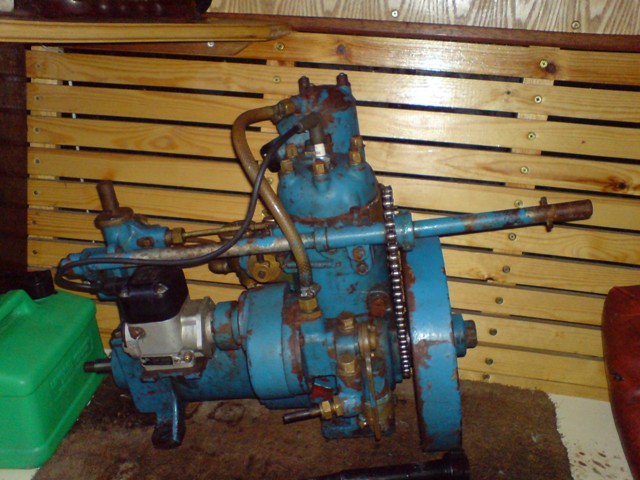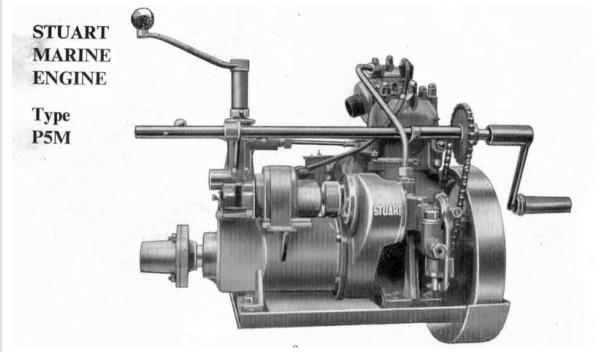| Author |
Message |
    
James Bagnall
New member
Username: jamesbagnall
Post Number: 1
Registered: 12-2006
| | Posted on Friday, December 29, 2006 - 11:31 am: | 




|
Hi All.
I'm new to this forum (having been referred here by The Norfolk Broads Forum at www.the-norfolk-broads.co.uk) as I have recently acquired an old Stuart engine of which I am unable to identify.
Sadly, it is currently not at my home address so I have not yet written down any model or serial numbers from the engine.
Can anybody help with identifying it? Photo attached.
Best wishes,
James. |
    
Mike hodgson
Member
Username: orwot
Post Number: 6
Registered: 10-2005
| | Posted on Friday, December 29, 2006 - 03:48 pm: | 




|
RE Help identifying an old engine?
P5M would be my guess
Mike.H.
 |
    
Mike hodgson
Member
Username: orwot
Post Number: 7
Registered: 10-2005
| | Posted on Friday, December 29, 2006 - 06:10 pm: | 




|
Forgot to mention I have a manual, if you are interested I can do you a electronic copy
Mike.H. |
    
James Bagnall
New member
Username: jamesbagnall
Post Number: 2
Registered: 12-2006
| | Posted on Friday, December 29, 2006 - 07:19 pm: | 




|
Wow, that would be great thanks - an electronic copy would be fantastic!
What a great forum this is!!
Best wishes,
James. |
    
Tim Mulvey
Senior Member
Username: timmulvey
Post Number: 106
Registered: 05-2003

| | Posted on Saturday, December 30, 2006 - 02:51 am: | 




|
James - if your engine has been used in salt water then to preserve your engine you need to keep it full of fresh water or radiator coolant otherwise you will have a lot of very serious corrosion destroying your engine from the inside. The pressure of the expansion of the rusting cast iron on the inside lining of the water jacket is so great it will split the cylinder. If it was only used in fresh water it will be OK becuase it generates a much finer corrosion of the metal. |
    
James Bagnall
New member
Username: jamesbagnall
Post Number: 3
Registered: 12-2006
| | Posted on Saturday, December 30, 2006 - 06:19 am: | 




|
Hi Tim.
Thanks for the advice - and this is going to sound like a really stupid question....
How does the cooling on one of these engines work in a marine environment then? Are they simply raw water cooled or do the usually run through a heat exchanger. My experience is mainly of more modern (BMC 1.5) engines on broads cruisers, so this is a new one to me!
Best wishes,
James. |
    
Nick Gilchrist
Member
Username: nick_gilchrist
Post Number: 6
Registered: 09-2006
| | Posted on Saturday, December 30, 2006 - 11:29 am: | 




|
James,
See my post of a few days ago and the advice on keel cooling.
Regards,
Nick |
    
Tim Mulvey
Senior Member
Username: timmulvey
Post Number: 107
Registered: 05-2003

| | Posted on Saturday, December 30, 2006 - 03:04 pm: | 




|
The usual setup is a seawater inlet from a skin fitting on the hull of the boat with a hose connection to the water pump in the lower foreground of your picture with the heated water exiting the engine from the outlet at the head of the engine via a hose to a connection about 10 inches down the exhaust pipe from the engine exhaust outlet.
I used to run about 40 litres of fresh water thru my engine at the end of a run leaving fresh in the engine but my preference would be for a closed cooling system. There are various types - keel cooling per Nick's message, an air cooled heat exchanger or a tank type sea water cooled heat exhanger. |


